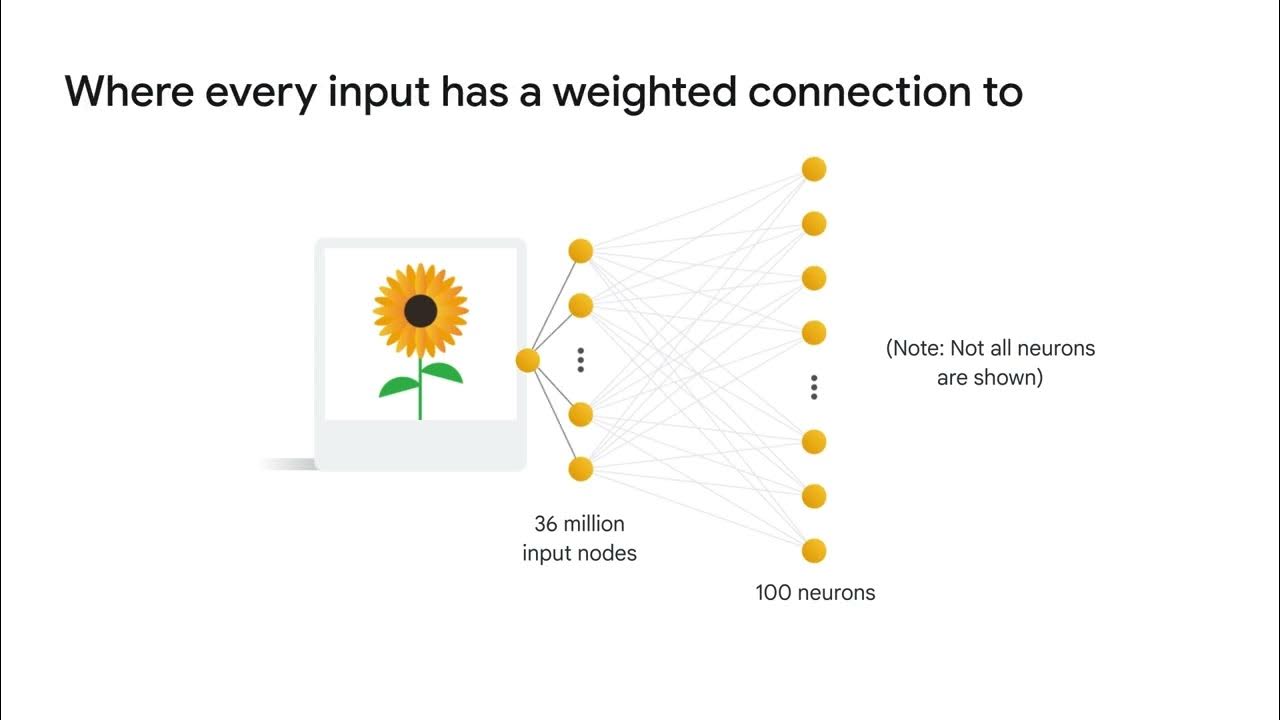Convolutional Neural Network
Summary
TLDRThe video explains how computers use Convolutional Neural Networks (CNN) to differentiate between objects, such as distinguishing between a wolf and a Samoyed dog. It covers the two main parts of CNN: convolution and pooling layers, which extract features and classify images. The process involves matching pixels and applying mathematical calculations like averaging and max pooling to refine image recognition. The script discusses how CNN layers process input images, normalize values, and use voting to predict classes. The result is a system capable of accurately classifying objects, even when there are slight differences between them.
Takeaways
- 😀 CNNs (Convolutional Neural Networks) help computers differentiate objects by analyzing pixel arrays in images.
- 😀 CNNs are composed of two main parts: the convolution and pooling layers, which are crucial for feature extraction.
- 😀 Convolution layers perform matching of image pixels with kernels to identify patterns, even with slight image differences.
- 😀 Mathematical operations like multiplying kernel values by pixel values and averaging them are key steps in convolution.
- 😀 Max pooling reduces the size of the image by selecting the maximum pixel value from each section of the kernel.
- 😀 Normalization adjusts negative pixel values to standardize the image, making it ready for further analysis.
- 😀 The output after convolution and pooling is a smaller image with the same pattern but reduced dimensions.
- 😀 After multiple convolutions and poolings, voting is used to classify the object based on which pixel values are most prominent.
- 😀 CNNs work with pixel arrays, starting with two-dimensional pixel data and refining it through several layers.
- 😀 The final classification of objects is determined by which class receives the strongest signals from pixel values after voting.
Q & A
What is the main purpose of Convolutional Neural Networks (CNN)?
-The main purpose of CNNs is to help computers distinguish between different objects in images by using algorithms designed to process visual data.
What are the two main parts of a CNN algorithm?
-The two main parts of a CNN algorithm are the convolutional and pooling layers (used for feature extraction) and the classification network.
How does the convolutional layer in CNN work?
-In the convolutional layer, a kernel (filter) is used to match parts of the input image by multiplying pixel values in the image with corresponding values in the kernel, followed by calculating an average. This results in a transformed image.
What is the purpose of the pooling layer in CNN?
-The pooling layer reduces the size of the image by selecting the maximum value from a small region of the image, helping to retain important features while reducing computational complexity.
What does max pooling do in CNN?
-Max pooling selects the maximum pixel value from a defined region of the image, resulting in a smaller image with preserved features, which helps the model generalize better.
What is the role of normalization in CNN?
-Normalization adjusts pixel values, especially negative ones, to standardize the image, making the training process more efficient and improving the model's performance.
What happens after the image has passed through the convolutional and pooling layers?
-After the convolutional and pooling layers, the processed image is passed through a series of stacked layers where predictions are made based on learned patterns.
How does the CNN algorithm make its final prediction?
-The CNN algorithm makes its final prediction by using a voting process in which pixels in the processed image vote for a specific class. The class with the most votes is selected as the prediction.
What is the significance of voting in the classification process?
-Voting helps to determine the class of the image by aggregating the votes from various pixels, each representing a part of the image. The majority vote dictates the final classification.
Why is CNN especially useful for image classification tasks?
-CNN is useful for image classification because it can automatically learn hierarchical features from the image data, reducing the need for manual feature extraction and improving accuracy.
Outlines

このセクションは有料ユーザー限定です。 アクセスするには、アップグレードをお願いします。
今すぐアップグレードMindmap

このセクションは有料ユーザー限定です。 アクセスするには、アップグレードをお願いします。
今すぐアップグレードKeywords

このセクションは有料ユーザー限定です。 アクセスするには、アップグレードをお願いします。
今すぐアップグレードHighlights

このセクションは有料ユーザー限定です。 アクセスするには、アップグレードをお願いします。
今すぐアップグレードTranscripts

このセクションは有料ユーザー限定です。 アクセスするには、アップグレードをお願いします。
今すぐアップグレード関連動画をさらに表示

ANN vs CNN vs RNN | Difference Between ANN CNN and RNN | Types of Neural Networks Explained

Complete Road Map To Prepare For Deep Learning🔥🔥🔥🔥

Bentuk Otaknya AI | Pengenalan Artificial Neural Network

TUGAS PEMROSESAN CITRA DIGITAL (RESUME TENTANG KONVOLUSI)

Convolutional Neural Networks

Graph Neural Networks - a perspective from the ground up
5.0 / 5 (0 votes)
